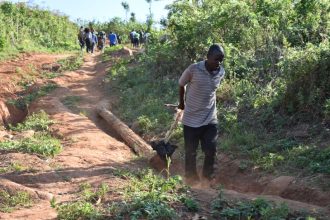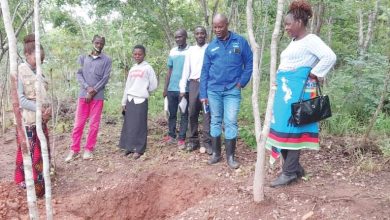Breaking the poverty cycle with social cash transfer
When 41-year-old Tabu Honde of Chakwera Village in Senior Chief Kilupula’s area in Karonga District was divorced in 2013 by her husband, her hopes for a bright future were thwarted as she left Mwenitete for her home village empty-handed.
To make matters worse, Honde and her seven children had no place to call home.

She had to start from a scratch to settle down. Life was tough. She had to construct a house while fending for her children.
“Since I had stayed long at my husband’s place, I struggled with life when I returned home. The environment was almost new to all of us. However, I managed to build a small mud, grass-thatched house that we called home,” she recalls.
Honde says raising seven children single-handedly was another huge challenge. However, the gods smiled at her when her name was included on the list of social cash transfer programme (SCT) participants in April 2018, to receive K11 000 monthly.
But she never received any money for the first four months, which to her, was a blessing in disguise as she ended up receiving a lump sum of K36 500.

All things being equal, this amount was supposed to be enough to help her rebuild her life. But the equation failed to balance, taking into account her family’s other daily needs.
Luckily enough, the same year there came Community Savings and Investment Promotion (Comsip), which provided training in saving culture to all SCT participants.
That was the turning point as the next chunk of money she received was channelled towards village savings and loans (VSL) that enabled her to construct a house and buy pigs for business.
She says: “After the training, I started saving the money while investing in small-scale businesses of making cooking oil, soap and caustic soda. The proceeds were used to construct a decent house and I also managed to buy a sofa set”.

Additionally, Honde says she is able to pay school fees for her daughter who is in form one at Mount Hermon Private Secondary School beside putting food on the table for the family while providing school needs such as notebooks and uniform to the other six children.
The story is not different from that of Nthamenye Mhango of Group Village head Gangamwale in Senior Chief Mwirang’ombe’s area in the same district, who is now a proud owner of a four-bedroom house courtesy of SCT.
The 56-year-old says before she started receiving the money in 2018, life was difficult, especially immediately after her husband married a second wife.
She says: “I started struggling. Life was harsh with my three grand children. However, this initiative restored my hope and here I am, I have a house with electricity, I bought a cow and I am able to lease plots to cultivate rice and buy fertiliser for the same.”
Mhango beams with a smile: “I have always envied and admired people who used to mop their houses. I am glad that I can now mop my own house.”

In Kasebwe Village in Senior Chief Mwakaboko’s area stands tall 27-year-old Mabvuto Kamba whose life has swiftly switched from rugs-to-riches by village standard, also thanks to the SCT programme that embraced her in 2018.
“In 2018 when my name was registered for the programme, I was receiving K10 400 per month, which was revised in 2019 to K24 000 per month. Luckily, I joined a VSL group that quickly multiplied my money through savings and shares which I used to start my grocery business.
“On top of that, I have constructed a decent house and I am rearing pigs,” he shares his experience.
However, while commending government for the programme that has transformed people’s livelihoods, Kamba is imploring it to increase the amount, arguing that the cost of living has gone up.
He says: “Much as we commend government for the initiative, living conditions have changed. Commodity prices have risen, which is making life difficult. It would be ideal to adjust the amount to match the current living conditions.”
SCT targets ultra-poor households to reduce poverty and hunger and increase school enrolment among learners.
The programme, which started in 2006, was piloted in Mchinji District, and subsequently expanded to six other districts in 2007.
By September 2017, the SCT programme had reached out to about 777 000 beneficiaries in over 174 500 households across 18 districts, including 430 000 child-headed families and in 2018, it was in all the country’s 28 districts.
In Karonga District, the programme also started the same year and four years down the line, its benefits are there for all to see.
According to Karonga District principal social welfare officer Tionge Mbale, the World Bank-funded programme has 7 485 registered participants.
He says: “The initiative has really borne fruits as most participants have accumulated assets such as houses, livestock, farm inputs and sent their children to school. Additionally, this year’s growing season, government gave them an additional K75 000 each to buy food and materials for the Affordable Inputs Programme”
For a smooth and efficient implementation of the programme, Mbale says from July last year, the paying system has migrated from manual to electronic and government has partnered with TNM plc as its service provider to lessen the burden of physical cash transfer to participants.
“To add value to the initiative, beneficiaries are also encouraged to venture into organised Comsip village savings and loans groups to enhance a saving culture that in turn brings in more money after accumulating interests,” he says.





